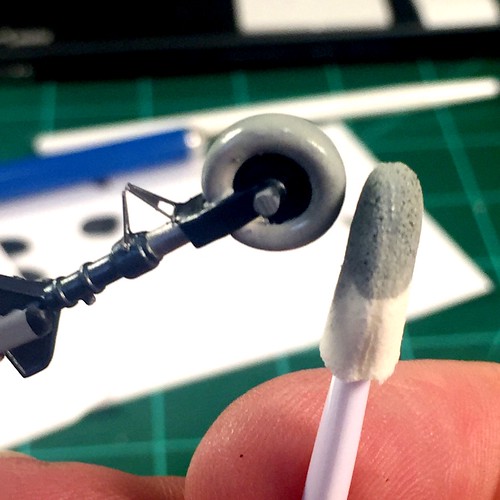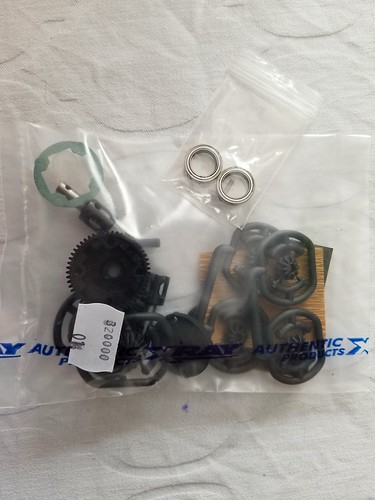Polypeptide N-acetylgalactosaminyltransferase (ppGalNAc-T), creating the oncofetal epitope required for mAb FDC-6 binding [21,22]. FDC6-positive FN was therefore termed “oncofetal fibronectin” (onfFN) [23]. The rate limiting step for the formation of onfFN is the addition of a-GalNAc to the Thr of the hexapeptide sequence VTHPGY by a specific ppGalNAc-T [23]. Recent work has demonstrated that up regulation of the expression of the ppGalNAc-T6 enhances transformational potentials of mammary epithelial cells through O-glycosylation of FN that may facilitate disruptive and invasive cell proliferation in vivo [14]. Freire-de-Lima and coworkers demonstrated that onfFN was up-regulated in human prostate epithelial cells undergoing EMT after TGF-b treatment. In this work the authors showed that EMT is totally dependent of onfFN appearance, once the knockdown of ppGalNAc-T3 and -T6, enzymes EED226 web involved in the synthesis of onfFN was able to abrogate the EMT induction [22]. Taken together, these findings motivate us to investigate the role of high glucose concentrations in the regulation of the onfFN biosynthesis during EMT process. Herein, we demonstrate that high glucose concentration induces EMT and increases Oglycosylation of FN, which generates the onfFN, through HBP, modulating the tumorogenesis.Elisa for TGF-b measurementFresh culture supernatants from A549 cells maintained in NG, HG or OG conditions were recovered and assayed immediately with a human TGF-b duo set kit (R D Systems, USA). DMEM containing 10 FBS was used as an internal control to normalize TGF-b amounts.Immunoprecipitation of onfFN and de-O-glycosylationFive bottles of 75 cm2 of A549 cells growing in hyperglycemia were lysate with 10 mL of lysis buffer (50 mM de Tris-HCl pH 7.4; 0,5 NP-40; 250 mM NaCl; 5 mM EDTA e 50 mM de NaF) containing freshly added protease inhibitor solution (SIGMA). The lysate was incubated with anti-onfFN (FDC-6) for 90 min at room temperature followed by incubation with 60 mL of agarose-conjugated G Protein (SIGMA) for 120 min at room temperature. The lysates were washed, boiled at 100uC during 5 min and centrifuged at 14.000 rpm for 5 min to recover the supernatants of immunoprecipitation. The resulting material were submitted to non-denaturating de-O-glycosylation reaction using the glycoprotein deglycosylation kit (Calbiochem) as manufacturer instructions. Briefly, 1 mL  of each glycosidase
of each glycosidase  a2-3,6,8,9-neuraminidase, b1,4-galactosidase, endo-a-N-acetylgalactosaminidase and b-N-acetylglucosaminidase were added to the immunoprecipitated material and incubation proceed at 37uC for 26 h. After incubation, 10 mL of each reaction were used to western blot analysis.ImmunoblottingSamples were separated on 10 SDS-polyacrylamide gels, and were subsequently electro blotted to nitrocellulose membranes. The membranes were blocked in Tris-buffered saline with 0.1 (v/v) Tween 20 containing 3 (w/v) nonfat dry milk. The blocked membranes were then incubated overnight at 4 uC with primary antibodies against N-cad (IgG1, Santa Cruz, USA), vimentin (IgM; Sigma, USA), GFAT (Cell Signaling Technology, USA), Glyceraldehyde 3-phosphate dehydrogenase, GAPDH (Santa Cruz, USA), total FN (EP5, IgG1; Santa Cruz, USA) and FDC6, directed to onfFN [23]. FDC6 does not react with FN from plasma or from adult normal tissues [23],[25]. The blots were then washed, incubated with the Elafibranor appropriate secondary antibody, and developed using ECL (GE Healthcare, USA). ImageJ software was use.Polypeptide N-acetylgalactosaminyltransferase (ppGalNAc-T), creating the oncofetal epitope required for mAb FDC-6 binding [21,22]. FDC6-positive FN was therefore termed “oncofetal fibronectin” (onfFN) [23]. The rate limiting step for the formation of onfFN is the addition of a-GalNAc to the Thr of the hexapeptide sequence VTHPGY by a specific ppGalNAc-T [23]. Recent work has demonstrated that up regulation of the expression of the ppGalNAc-T6 enhances transformational potentials of mammary epithelial cells through O-glycosylation of FN that may facilitate disruptive and invasive cell proliferation in vivo [14]. Freire-de-Lima and coworkers demonstrated that onfFN was up-regulated in human prostate epithelial cells undergoing EMT after TGF-b treatment. In this work the authors showed that EMT is totally dependent of onfFN appearance, once the knockdown of ppGalNAc-T3 and -T6, enzymes involved in the synthesis of onfFN was able to abrogate the EMT induction [22]. Taken together, these findings motivate us to investigate the role of high glucose concentrations in the regulation of the onfFN biosynthesis during EMT process. Herein, we demonstrate that high glucose concentration induces EMT and increases Oglycosylation of FN, which generates the onfFN, through HBP, modulating the tumorogenesis.Elisa for TGF-b measurementFresh culture supernatants from A549 cells maintained in NG, HG or OG conditions were recovered and assayed immediately with a human TGF-b duo set kit (R D Systems, USA). DMEM containing 10 FBS was used as an internal control to normalize TGF-b amounts.Immunoprecipitation of onfFN and de-O-glycosylationFive bottles of 75 cm2 of A549 cells growing in hyperglycemia were lysate with 10 mL of lysis buffer (50 mM de Tris-HCl pH 7.4; 0,5 NP-40; 250 mM NaCl; 5 mM EDTA e 50 mM de NaF) containing freshly added protease inhibitor solution (SIGMA). The lysate was incubated with anti-onfFN (FDC-6) for 90 min at room temperature followed by incubation with 60 mL of agarose-conjugated G Protein (SIGMA) for 120 min at room temperature. The lysates were washed, boiled at 100uC during 5 min and centrifuged at 14.000 rpm for 5 min to recover the supernatants of immunoprecipitation. The resulting material were submitted to non-denaturating de-O-glycosylation reaction using the glycoprotein deglycosylation kit (Calbiochem) as manufacturer instructions. Briefly, 1 mL of each glycosidase a2-3,6,8,9-neuraminidase, b1,4-galactosidase, endo-a-N-acetylgalactosaminidase and b-N-acetylglucosaminidase were added to the immunoprecipitated material and incubation proceed at 37uC for 26 h. After incubation, 10 mL of each reaction were used to western blot analysis.ImmunoblottingSamples were separated on 10 SDS-polyacrylamide gels, and were subsequently electro blotted to nitrocellulose membranes. The membranes were blocked in Tris-buffered saline with 0.1 (v/v) Tween 20 containing 3 (w/v) nonfat dry milk. The blocked membranes were then incubated overnight at 4 uC with primary antibodies against N-cad (IgG1, Santa Cruz, USA), vimentin (IgM; Sigma, USA), GFAT (Cell Signaling Technology, USA), Glyceraldehyde 3-phosphate dehydrogenase, GAPDH (Santa Cruz, USA), total FN (EP5, IgG1; Santa Cruz, USA) and FDC6, directed to onfFN [23]. FDC6 does not react with FN from plasma or from adult normal tissues [23],[25]. The blots were then washed, incubated with the appropriate secondary antibody, and developed using ECL (GE Healthcare, USA). ImageJ software was use.
a2-3,6,8,9-neuraminidase, b1,4-galactosidase, endo-a-N-acetylgalactosaminidase and b-N-acetylglucosaminidase were added to the immunoprecipitated material and incubation proceed at 37uC for 26 h. After incubation, 10 mL of each reaction were used to western blot analysis.ImmunoblottingSamples were separated on 10 SDS-polyacrylamide gels, and were subsequently electro blotted to nitrocellulose membranes. The membranes were blocked in Tris-buffered saline with 0.1 (v/v) Tween 20 containing 3 (w/v) nonfat dry milk. The blocked membranes were then incubated overnight at 4 uC with primary antibodies against N-cad (IgG1, Santa Cruz, USA), vimentin (IgM; Sigma, USA), GFAT (Cell Signaling Technology, USA), Glyceraldehyde 3-phosphate dehydrogenase, GAPDH (Santa Cruz, USA), total FN (EP5, IgG1; Santa Cruz, USA) and FDC6, directed to onfFN [23]. FDC6 does not react with FN from plasma or from adult normal tissues [23],[25]. The blots were then washed, incubated with the Elafibranor appropriate secondary antibody, and developed using ECL (GE Healthcare, USA). ImageJ software was use.Polypeptide N-acetylgalactosaminyltransferase (ppGalNAc-T), creating the oncofetal epitope required for mAb FDC-6 binding [21,22]. FDC6-positive FN was therefore termed “oncofetal fibronectin” (onfFN) [23]. The rate limiting step for the formation of onfFN is the addition of a-GalNAc to the Thr of the hexapeptide sequence VTHPGY by a specific ppGalNAc-T [23]. Recent work has demonstrated that up regulation of the expression of the ppGalNAc-T6 enhances transformational potentials of mammary epithelial cells through O-glycosylation of FN that may facilitate disruptive and invasive cell proliferation in vivo [14]. Freire-de-Lima and coworkers demonstrated that onfFN was up-regulated in human prostate epithelial cells undergoing EMT after TGF-b treatment. In this work the authors showed that EMT is totally dependent of onfFN appearance, once the knockdown of ppGalNAc-T3 and -T6, enzymes involved in the synthesis of onfFN was able to abrogate the EMT induction [22]. Taken together, these findings motivate us to investigate the role of high glucose concentrations in the regulation of the onfFN biosynthesis during EMT process. Herein, we demonstrate that high glucose concentration induces EMT and increases Oglycosylation of FN, which generates the onfFN, through HBP, modulating the tumorogenesis.Elisa for TGF-b measurementFresh culture supernatants from A549 cells maintained in NG, HG or OG conditions were recovered and assayed immediately with a human TGF-b duo set kit (R D Systems, USA). DMEM containing 10 FBS was used as an internal control to normalize TGF-b amounts.Immunoprecipitation of onfFN and de-O-glycosylationFive bottles of 75 cm2 of A549 cells growing in hyperglycemia were lysate with 10 mL of lysis buffer (50 mM de Tris-HCl pH 7.4; 0,5 NP-40; 250 mM NaCl; 5 mM EDTA e 50 mM de NaF) containing freshly added protease inhibitor solution (SIGMA). The lysate was incubated with anti-onfFN (FDC-6) for 90 min at room temperature followed by incubation with 60 mL of agarose-conjugated G Protein (SIGMA) for 120 min at room temperature. The lysates were washed, boiled at 100uC during 5 min and centrifuged at 14.000 rpm for 5 min to recover the supernatants of immunoprecipitation. The resulting material were submitted to non-denaturating de-O-glycosylation reaction using the glycoprotein deglycosylation kit (Calbiochem) as manufacturer instructions. Briefly, 1 mL of each glycosidase a2-3,6,8,9-neuraminidase, b1,4-galactosidase, endo-a-N-acetylgalactosaminidase and b-N-acetylglucosaminidase were added to the immunoprecipitated material and incubation proceed at 37uC for 26 h. After incubation, 10 mL of each reaction were used to western blot analysis.ImmunoblottingSamples were separated on 10 SDS-polyacrylamide gels, and were subsequently electro blotted to nitrocellulose membranes. The membranes were blocked in Tris-buffered saline with 0.1 (v/v) Tween 20 containing 3 (w/v) nonfat dry milk. The blocked membranes were then incubated overnight at 4 uC with primary antibodies against N-cad (IgG1, Santa Cruz, USA), vimentin (IgM; Sigma, USA), GFAT (Cell Signaling Technology, USA), Glyceraldehyde 3-phosphate dehydrogenase, GAPDH (Santa Cruz, USA), total FN (EP5, IgG1; Santa Cruz, USA) and FDC6, directed to onfFN [23]. FDC6 does not react with FN from plasma or from adult normal tissues [23],[25]. The blots were then washed, incubated with the appropriate secondary antibody, and developed using ECL (GE Healthcare, USA). ImageJ software was use.
Nucleoside Analogues nucleoside-analogue.com
Just another WordPress site
